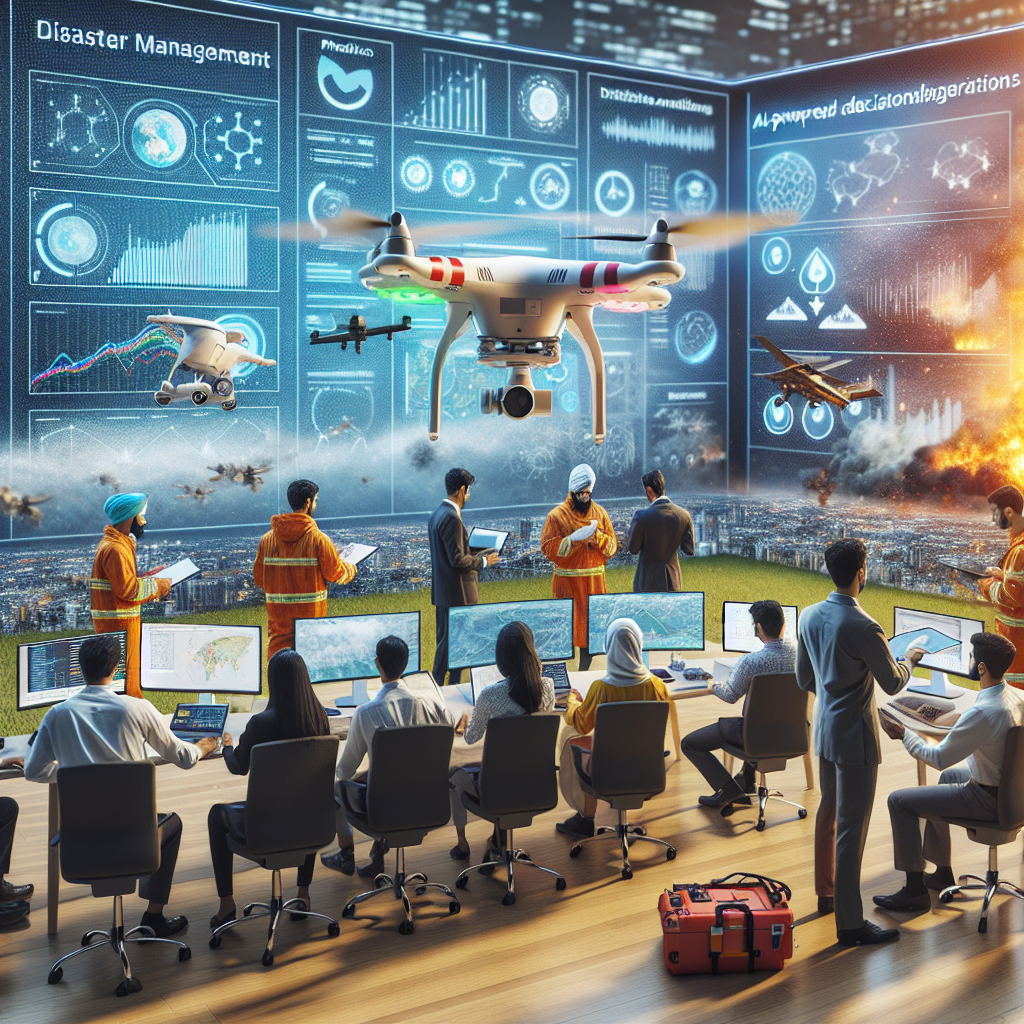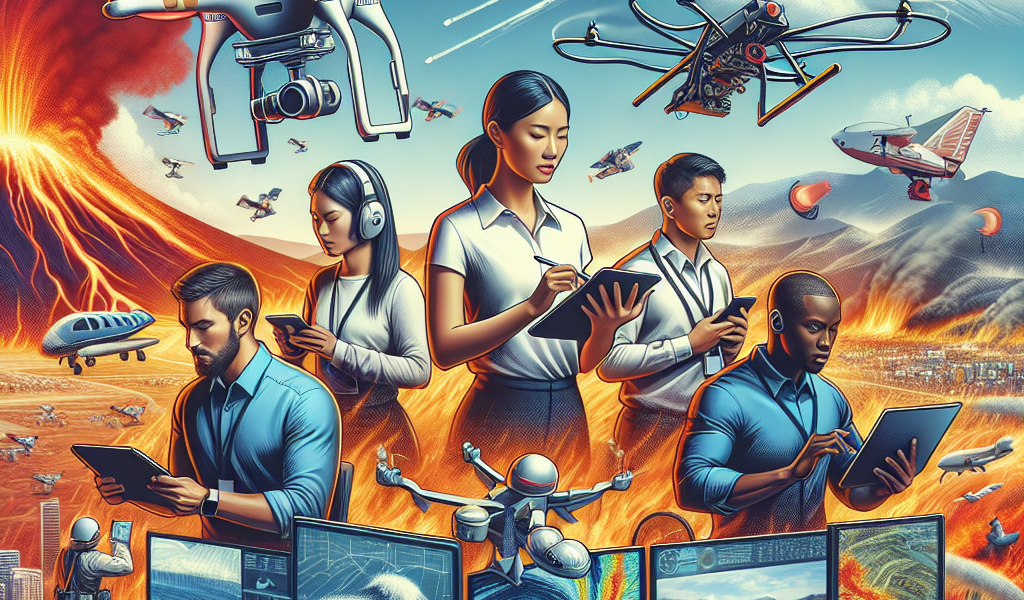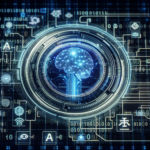-
Table of Contents
“Empowering Resilience: Harnessing Technology for Effective Disaster Management”
Introduction

The Role of Technology in Disaster Management
In an era marked by rapid technological advancements, the role of technology in disaster management has become increasingly pivotal. From early warning systems and real-time communication networks to advanced data analytics and unmanned aerial vehicles, technology is revolutionizing the way we prepare for, respond to, and recover from natural and man-made disasters. These innovations not only enhance the efficiency and effectiveness of emergency response efforts but also significantly mitigate the impact of disasters on communities. By leveraging cutting-edge tools and platforms, disaster management agencies can better predict potential hazards, coordinate timely interventions, and facilitate the swift delivery of aid. As the frequency and intensity of disasters continue to rise globally, the integration of technology into disaster management strategies is not just beneficial but essential for safeguarding lives and property.
Enhancing Early Warning Systems Through Advanced Technology
In recent years, the role of technology in disaster management has become increasingly pivotal, particularly in enhancing early warning systems. As natural disasters grow in frequency and intensity due to climate change, the need for advanced technological solutions to predict and mitigate their impact has never been more urgent. Early warning systems, which are designed to alert communities about impending disasters, have seen significant improvements thanks to technological advancements, thereby saving countless lives and reducing economic losses.
One of the most notable advancements in this field is the integration of satellite technology. Satellites equipped with high-resolution imaging and sophisticated sensors can monitor weather patterns, ocean temperatures, and seismic activities in real-time. This data is then transmitted to ground stations where it is analyzed to predict potential disasters such as hurricanes, tsunamis, and earthquakes. For instance, the use of geostationary satellites has revolutionized hurricane tracking, providing meteorologists with detailed information about storm formation, trajectory, and intensity. Consequently, communities in the path of these storms receive timely warnings, allowing for better preparation and evacuation plans.
In addition to satellite technology, the advent of artificial intelligence (AI) and machine learning has further enhanced early warning systems. AI algorithms can process vast amounts of data from various sources, including social media, weather stations, and historical records, to identify patterns and predict future events. Machine learning models, which improve over time with more data, can offer more accurate and timely predictions. For example, AI-driven models have been used to predict the likelihood of landslides by analyzing rainfall patterns, soil moisture levels, and topographical data. This allows authorities to issue warnings and take preventive measures, such as evacuating residents from high-risk areas.
Moreover, the proliferation of Internet of Things (IoT) devices has also played a crucial role in disaster management. IoT sensors can be deployed in vulnerable areas to monitor environmental conditions in real-time. These sensors can detect changes in temperature, humidity, and pressure, which are often precursors to natural disasters. For instance, IoT-based flood monitoring systems use sensors placed in rivers and reservoirs to measure water levels. When these levels reach a critical point, the system automatically sends alerts to local authorities and residents, enabling them to take swift action.
Furthermore, mobile technology has made early warning systems more accessible to the general public. With the widespread use of smartphones, emergency alerts can be disseminated quickly and efficiently through text messages, apps, and social media platforms. Governments and organizations have developed mobile applications that provide real-time updates on weather conditions, evacuation routes, and emergency shelters. These apps often include features such as GPS tracking and interactive maps, which help users navigate safely during a disaster.
While technology has significantly improved early warning systems, it is essential to ensure that these systems are inclusive and accessible to all. This includes addressing the digital divide and ensuring that vulnerable populations, such as those in remote or underserved areas, have access to the necessary technology and information. Collaborative efforts between governments, private sector, and non-governmental organizations are crucial in achieving this goal.
In conclusion, the integration of advanced technology in disaster management has greatly enhanced early warning systems, making them more accurate, timely, and accessible. From satellite imaging and AI algorithms to IoT sensors and mobile technology, these innovations have transformed the way we predict and respond to natural disasters. As we continue to face the challenges posed by climate change, leveraging technology will be key to building more resilient communities and safeguarding lives and livelihoods.
The Impact of Drones in Disaster Response and Recovery
In recent years, the role of technology in disaster management has become increasingly significant, with drones emerging as a pivotal tool in response and recovery efforts. These unmanned aerial vehicles (UAVs) have revolutionized the way emergency services operate, offering a bird’s-eye view that was previously unattainable. As natural disasters become more frequent and severe, the need for efficient and effective response mechanisms has never been more critical. Drones, with their ability to quickly survey large areas, provide real-time data, and deliver essential supplies, are proving to be indispensable in the field of disaster management.
One of the most notable impacts of drones in disaster response is their ability to conduct rapid assessments of affected areas. In the immediate aftermath of a disaster, time is of the essence. Traditional methods of surveying damage, such as sending ground teams or using manned aircraft, can be time-consuming and dangerous. Drones, however, can be deployed quickly and can cover vast areas in a fraction of the time. This rapid assessment capability allows emergency responders to identify the most severely affected areas and prioritize their efforts accordingly. For instance, in the wake of hurricanes or earthquakes, drones can capture high-resolution images and videos, providing critical information about the extent of the damage and the locations of people in need of urgent assistance.
Moreover, drones play a crucial role in search and rescue operations. Equipped with thermal imaging cameras, drones can detect heat signatures from people trapped under rubble or stranded in remote locations. This technology significantly enhances the efficiency of search and rescue missions, increasing the chances of saving lives. In addition to locating survivors, drones can also deliver essential supplies such as food, water, and medical kits to areas that are otherwise inaccessible due to damaged infrastructure. This capability is particularly valuable in the early stages of a disaster when traditional supply chains are often disrupted.
Transitioning from immediate response to recovery, drones continue to offer substantial benefits. They can be used to monitor ongoing recovery efforts, ensuring that resources are being allocated effectively and that progress is being made. For example, drones can track the reconstruction of buildings and infrastructure, providing real-time updates to authorities and stakeholders. This continuous monitoring helps to identify any potential issues early on, allowing for timely interventions and adjustments to recovery plans.
Furthermore, the data collected by drones can be invaluable for future disaster preparedness. By analyzing the imagery and data gathered during and after a disaster, experts can gain insights into the vulnerabilities of certain areas and develop strategies to mitigate the impact of future events. This proactive approach to disaster management can save lives and reduce economic losses in the long run.
In addition to their practical applications, drones also offer a cost-effective solution for disaster management. Compared to traditional methods, drones are relatively inexpensive to operate and maintain. This affordability makes them accessible to a wide range of organizations, from government agencies to non-profit groups, enabling a more coordinated and comprehensive response to disasters.
In conclusion, the impact of drones in disaster response and recovery is profound. Their ability to provide rapid assessments, enhance search and rescue operations, deliver essential supplies, monitor recovery efforts, and contribute to future preparedness makes them an invaluable asset in the field of disaster management. As technology continues to advance, the capabilities of drones are likely to expand even further, offering new and innovative ways to respond to and recover from disasters.
Leveraging Big Data and AI for Effective Disaster Management
In recent years, the role of technology in disaster management has become increasingly significant, with big data and artificial intelligence (AI) emerging as pivotal tools in enhancing the effectiveness of response strategies. As natural disasters grow in frequency and intensity due to climate change, the need for advanced technological solutions has never been more pressing. By leveraging big data and AI, authorities and organizations can better predict, prepare for, and respond to disasters, ultimately saving lives and reducing economic losses.
One of the primary ways big data contributes to disaster management is through predictive analytics. By analyzing vast amounts of historical data, including weather patterns, geological activity, and social media trends, AI algorithms can identify potential disaster hotspots and forecast future events with remarkable accuracy. For instance, machine learning models can predict the likelihood of hurricanes, earthquakes, or floods, allowing authorities to issue timely warnings and take preventive measures. This proactive approach not only mitigates the impact of disasters but also enhances community resilience.
Moreover, big data and AI play a crucial role in real-time disaster response. During a crisis, the rapid collection and analysis of data from various sources, such as satellite imagery, drones, and sensors, enable emergency responders to gain a comprehensive understanding of the situation on the ground. AI-powered tools can process this information swiftly, identifying areas most in need of assistance and optimizing resource allocation. For example, during the 2017 Hurricane Harvey in the United States, AI-driven platforms helped map flood-affected regions, guiding rescue teams to stranded individuals and ensuring that aid reached the most vulnerable populations.
In addition to improving response efforts, big data and AI also enhance post-disaster recovery and reconstruction. By analyzing data on infrastructure damage, economic losses, and social impacts, AI can assist in prioritizing recovery efforts and allocating resources efficiently. This data-driven approach ensures that rebuilding efforts are not only swift but also sustainable, reducing the risk of future disasters. Furthermore, AI can help monitor the progress of recovery projects, providing valuable insights into their effectiveness and identifying areas for improvement.
However, the integration of big data and AI in disaster management is not without challenges. One significant concern is data privacy and security. The collection and analysis of vast amounts of personal and sensitive information raise ethical questions about how this data is used and protected. Ensuring that data is handled responsibly and transparently is crucial to maintaining public trust and cooperation. Additionally, the reliance on technology necessitates robust infrastructure and technical expertise, which may be lacking in some regions. Bridging this digital divide is essential to ensure that all communities can benefit from these advanced tools.
Despite these challenges, the potential of big data and AI to revolutionize disaster management is undeniable. As technology continues to evolve, so too will its applications in this critical field. Collaborative efforts between governments, private sector companies, and research institutions are key to harnessing the full potential of these technologies. By fostering innovation and investing in technological advancements, we can build a more resilient and prepared world, capable of facing the growing threats posed by natural disasters.
In conclusion, the integration of big data and AI in disaster management represents a significant leap forward in our ability to predict, respond to, and recover from natural disasters. While challenges remain, the benefits of these technologies far outweigh the drawbacks, offering a promising path towards a safer and more resilient future. As we continue to navigate the complexities of a changing climate, embracing technological solutions will be essential in safeguarding lives and livelihoods.
Conclusion
The role of technology in disaster management is pivotal, enhancing the efficiency and effectiveness of preparedness, response, recovery, and mitigation efforts. Advanced technologies such as Geographic Information Systems (GIS), remote sensing, early warning systems, and communication networks enable real-time data collection, analysis, and dissemination, which are crucial for timely decision-making and resource allocation. Additionally, innovations in artificial intelligence, machine learning, and big data analytics facilitate predictive modeling and risk assessment, helping to anticipate and mitigate the impacts of disasters. Overall, technology significantly improves the ability to manage disasters, ultimately saving lives, reducing economic losses, and fostering resilient communities.





